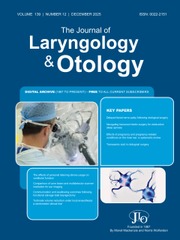No CrossRef data available.
Article contents
Homolateral and Contralateral Masking of Tinnitus
Published online by Cambridge University Press: 27 March 2025
Extract
Masking in psychoacoustic experiments means that the perception of one acoustic stimulus, the signal, is over-ruled by the introduction of another acoustic stimulus, the masker. Signal and masker will compete with each other in a predictable way, as noted by Wegel and Lane (1924), and by Zwicker and Feldtkeller (1967), among others.
The interaction of signal and masker is described by masking curves, which can be thought of as a contour-line of the neural elements involved in processing signal and masker. Thus the masking curves reveal some of the parameters of the signal. Therefore masking experiments can be used to analyse signals otherwise not easily investigated. This was my purpose in studying the masking of tinnitus.
Three main features turned out to be of special interest:
1. the influence of frequency, spectrum and intensity, both of the tinnitus and of the masking stimuli;
2. the temporal pattern of the masking process;
3. binaural masking effects.
- Type
- Session II—Audiologic Considerations (Moderator: Charles I. Berlin)
- Information
- The Journal of Laryngology & Otology , Volume 95 , Issue S4: Proceedings of the First International Tinnitus Seminar (New York, 8-9 June, 1979) , September 1981 , pp. 60 - 70
- Copyright
- Copyright © JLO (1984) Limited 1981


